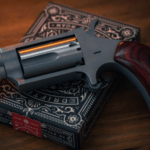The intense experience of nature and salutary tranquillity: just two reasons to head out in the winter with your tent or hammock, with or without a rucksack, or with your car or caravan.
Winter camping is possible in almost all parts of the world. Both beginners and experienced campers are welcome. In many cases, you may also light a campfire, fire bowl, or tent stove. See the winter table for an overview of the facilities.

For winter camping (and the spring and autumn) you don’t necessarily need expensive camping gear. Up to -15°C, with a little preparation and an extra sleeping bag, you can get by with a single-shell cotton tent. This article shares tips and experiences from and for winter campers to make your camping unforgettable even during the cool season.
Choice of a good tent
During the winter months, it is recommended to choose an all weather tents with stove.
Upon arrival you should clear the camping area of snow. This prevents a lot of creaking noise under your tent.
A great idea would be having a sturdy hammer if the ground is frozen. This way you will be capable of pitching your tent much easier. Aluminum pegs can bend or break if it’s very cold. Therefore, it’s recommended to take along at least one steel peg to be on a safe side and be able to set up your tent.
You should not pound the pegs all the way into the ground. If you break the tent down, you can then loosen the pegs by knocking them in a little deeper.
A lot of colds come from the ground, so make sure you have extra insulation or a tent footprint.
A soft brush is useful for removing snow from your tent.
Choose a large inner tent or fewer people, so you never have to lie against the inner tent. This keeps you warm and your sleeping bag doesn’t get wet.
Sleep warm
Make sure you invest in high-quality footprints for tents that are covered with (thin) (aluminum) insulation mat, possibly together with a ground blanket.
Use a sleeping mat with a high insulation value (R-value) (for example, Therm-a-Rest or Exped). With a fleece blanket between the sleeping mat and sleeping bag you prevent cold from rising from below.
The comfort temperature of a sleeping bag can be increased by using an extra sleeping bag (or a comforter from home).
Cover the sleeping area with a fleece or Dralon blanket or another material that does not absorb moisture. In this way, the sleeping area remains dry.
A warm hot water bottle is nice in the sleeping bag.
Put a few clothes on in your sleeping bag. An interaction occurs between the body and the filling material of the sleeping bag. At first, it is cold for a while when you go into the sleeping bag, but it soon gets warmer. When you wear two woolen sweaters or a coat, for example, this no longer works. Your body will warm the sweater but the interaction with the sleeping bag is lost. Exposing the sleeping bag, in or at most some thermal underwear, works best. After all, have you ever seen an Eskimo in pajamas?
A lot of heat is also lost through the head, so use a (sleeping) hat if necessary.
If possible, store or place damp items (shoes, coats, etc.) outside the sleeping area.
Use a urinal bucket or other device. You will then not have to leave the tent completely for a (small) sanitary stop and you will cool down a bit less.
Staying warm during the day
Thermal underwear is a good way to stay warm and to build up layers of clothing.
Keep moving and take a walk or bike ride during the day, for example.
Clothes (socks, shirts, etc.) that have become cold in the bag can be warmed up in the morning by heating them with body heat in the sleeping bag.
Make sure you have a good combination of shoes and socks.
If you are sitting somewhere, place your feet on a tree trunk.
Campfire or cooking fire
First and foremost, you should check if a campfire is possible.
Keep shoes away from the campfire. If you keep a shoe close to the campfire, the adhesive layer between the soles may come off. An (expensive) shoe will then no longer be waterproof.
Besides, it is almost impossible to repair melted soles. Additionally, warming up a well-insulated shoe is of little use. Thus, it is recommended to keep the shoes at a safe distance.

Cooking
In order to cook at the campground, you might use a gasoline or petroleum-powered burner. Gas burners with butane gas filled disposable tanks for example fail at lower temperatures.
Provide (waterproof) matches. A gaslighter will fail in freezing temperatures.
A thermos will prevent your water supply from freezing.
A cool box can also serve as a frost-free storage place, especially if you can give it a sheltered place in the sanitary building, for example.
Spirit doesn’t burn as well at low temperatures. It burns better if you make a ‘wick’ (of toilet paper or similar) and just let it sit.
If you are very confident with your burner and it is very cold: cook in the tent. The burner in a box and ventilate sufficiently.
Other useful tips
Freezing temperatures significantly reduce the capacity of batteries. Keep your phone close to your body during the day. You can also use a hot water bottle to keep the cell phone warm. Have an extra battery, battery pack, 12-Volt car charger, or regular charger if there is a charging option.
In the evening you can burn some tea lights in a pan in the front tent. That gives light and warmth. For lighting tips, see Lighting in and around the tent.
Alcohol (18+) first makes you feel warmer when you drink it (your blood is sent to the surface of your skin), but you then lose the extra heat to the outside air. This ultimately lowers your body temperature.







